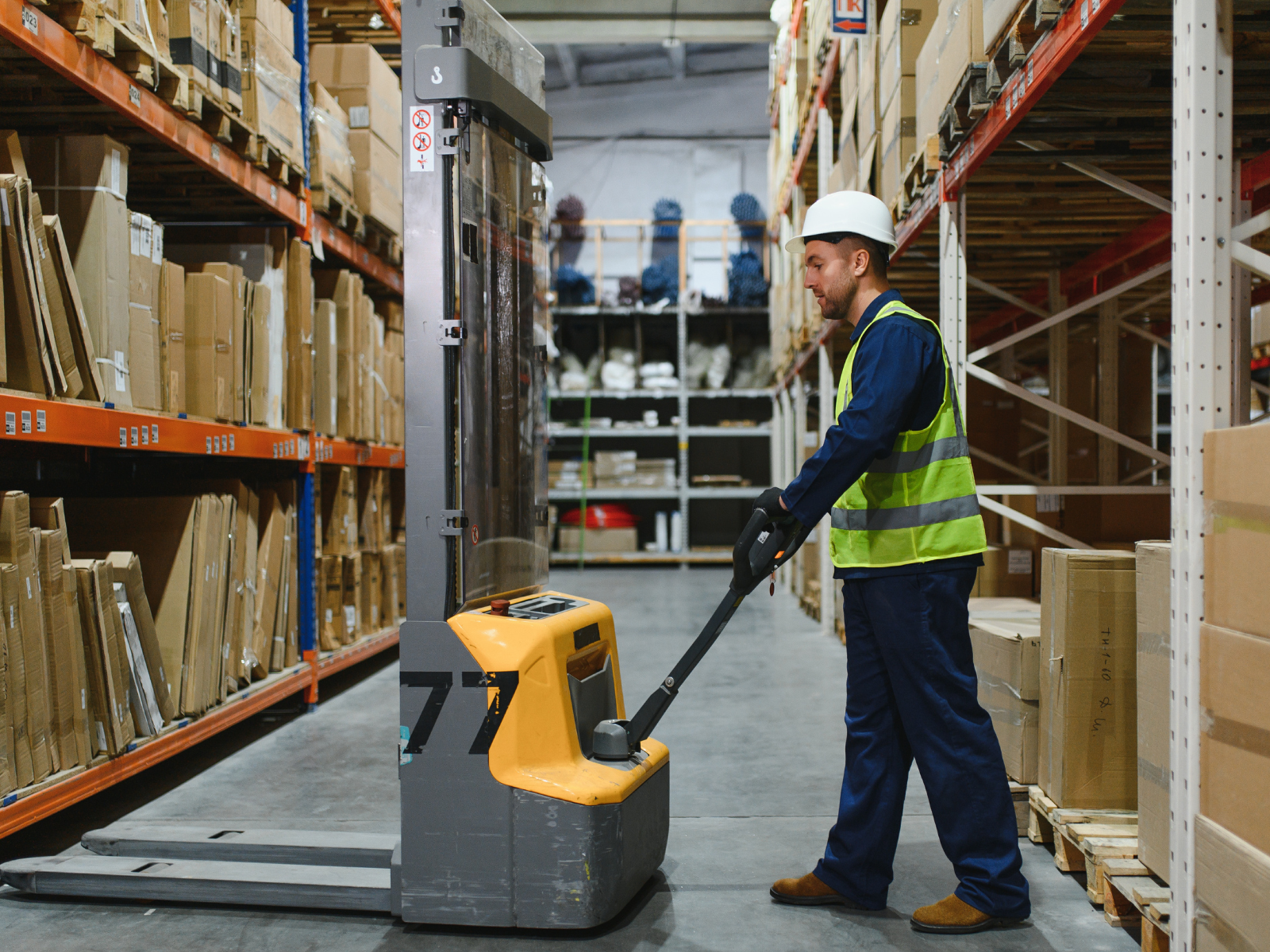
What is Material Handling Equipment? 4 Key Types Explained
What is Material Handling Equipment?
Material handling equipment (MHE) refers to the machines, tools, and systems used by businesses to move, store, control, and protect materials throughout the manufacturing, warehousing, and distribution process.
From forklifts lifting pallets to conveyors moving goods along production lines, this equipment ensures that materials are handled safely and efficiently. Materials handling equipment is used to reduce manual labour, improving productivity, and minimising damage or loss.
In short, material handling equipment is essential for keeping goods flowing smoothly from supplier to customer.
The 4 Key Types of Material Handling Equipment
Material handling equipment is typically divided into four main categories, each designed for a specific role in managing and moving materials efficiently.
1. Storage and Handling Equipment
This category includes tools designed to store materials and facilitate their movement within a facility.
Examples include:
- Shelving and Racks: Used for organising goods in warehouses or retail spaces.
- Bins and Containers: Ideal for holding small parts or loose materials.
- Pallets and Skids: Used for stacking and transporting items, making them easier to move with industrial trucks.
Efficient storage and handling equipment help keep facilities organised, reduce clutter, and improve accessibility.
2. Industrial Trucks
Industrial trucks are versatile machines used for transporting materials within a facility.
Examples include:
- Forklift Trucks: Widely used for lifting and moving heavy pallets.
- Pallet Jacks: Ideal for moving pallets in tight spaces.
- Order Pickers: Help retrieve goods from high shelves.
- Hand Trucks: Perfect for small-scale material movement.
These machines are essential for improving workflow, reducing manual effort, and enhancing safety when handling heavy or bulky loads.
3. Bulk Material Handling Equipment
This equipment is specifically designed to transport loose bulk materials.
Examples include:
- Conveyor Belts: Used for moving large quantities of loose items, such as coal or gravel, around production environments.
- Grain Elevators: Efficiently store bulk raw materials like grains.
- Stackers and Reclaimers: Used for piling and retrieving large quantities of materials.
Bulk handling systems are crucial for industries like agriculture, construction, and mining where large volumes of materials need to be moved efficiently.
4. Engineered Systems
Engineered systems are designed for specific material handling tasks and can include automated solutions.
Examples include:
- Automated Guided Vehicles (AGVs): Used for transporting materials without human intervention.
- Autonomous mobile robots (AMRs): AMRs are more advanced than AVGs. They can map and adapt to their surroundings using sensors.
- Palletisers: Palletisers replace the need for humans to load pallets. They stack items on a pallet and release the pallet onto a conveyor for further processing.
- Sortation systems: Sortation systems can automatically detect objects and route them to the desired location.
Engineered systems combine advanced technology with automation to improve efficiency, reduce labour costs, and boost accuracy in modern warehouses and factories.
Advantages of Material Handling Equipment
Efficient material handling can make a significant difference to operational performance. The right equipment helps businesses:
- Increase productivity
Material handling equipment can help speed up loading, unloading, and transportation. - Improve safety
The right material handling equipment can improve safety by reducing the need for manual lifting. - Optimise storage space
Businesses can optimise their warehouse storage space with materials handling equipment - Reduce costs
Materials handling equipment can help reduce costs by cutting waste and preventing product damage.
Whether you operate in manufacturing, logistics, or retail distribution, investing in the right material handling equipment can help streamline operations and improve profitability.
Choosing the Right Material Handling Equipment
The best material handling setup for your business depends on factors like:
- Type and weight of materials
- Space and layout of your facility
- Level of automation desired
- Budget and long-term operational goals
How Can I Finance My Material Handling Equipment?
At Time Finance, we understand that material handling equipment is crucial to many businesses and that investing in it comes with large upfront costs. That’s why we offer asset finance solutions that make it easier to access the equipment you need.
With our flexible finance options, you can spread the cost over manageable monthly repayments while keeping cashflow healthy and equipment up to date.
Contact our team today to speak with one of our experts and find out how we can help your business invest in the tools it needs to operate efficiently and grow.